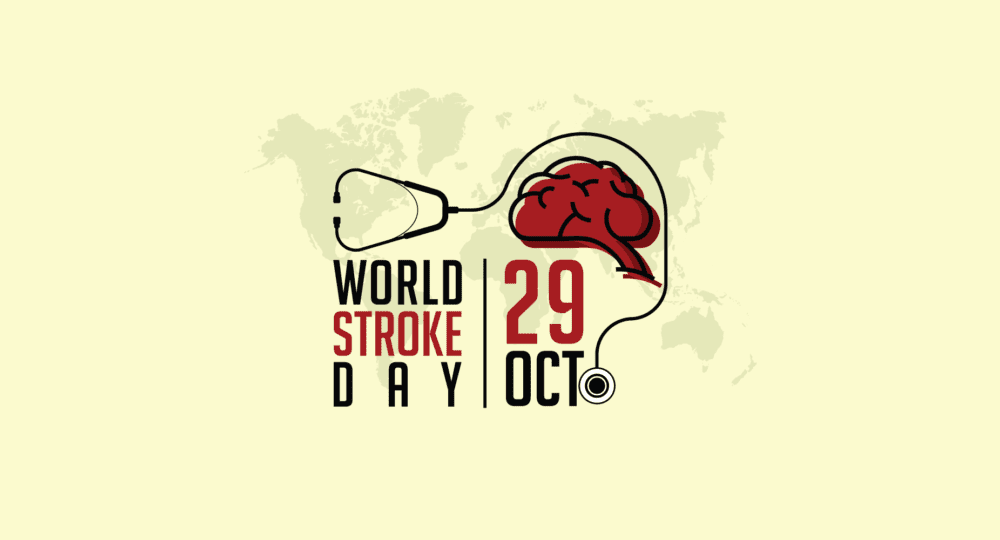Did you know that one in four people will have a stroke? According to worldstrokecampaign.org this year 14.5 million people will have a stroke and 5.5 million people will die as a result. Stroke is the leading cause of disability worldwide and the 2nd leading cause of death, but almost all strokes can be prevented. This is why we celebrate World Stroke Day. This year, World Stroke Day is on Tuesday, October 29th. It is a day to spread awareness and knowledge about Strokes with the goal of stroke prevention and decreasing disability and mortality should someone suffer a stroke.
What is a stroke?
- There are 2 main types of strokes, Ischemic and Hemorrhagic.
- Ischemic strokes occur as a result of a blockage in the blood vessels of the brain. These blockages can be due to a clot or atherosclerosis (fatty deposits).
- Hemorrhagic strokes occur when a weak blood vessel in the brain ruptures and bleeds into the brain.
Remember the acronym FAST to recognize the symptoms of a stroke.
- F = Facial Drooping (Is 1 side of the face drooping or numb?)
- A = Arm weakness (Is 1 arm weak or numb?)
- S = Speech (Is the person unable to speak or has slurred speech?)
- T = Time to call 911
What is the treatment for a Stroke?
- Recognizing the signs and symptoms of a stroke and seeking medical care early significantly improves outcomes
- Medical professionals will help determine whether “Clot busting” drugs (such as tPA) and procedures to remove a clot are appropriate treatments for Ischemic stroke patients. For hemorrhagic stroke patients, there are medications and procedures available to help stop the bleeding.
- Rehabilitation is a critical part of the treatment plan. Physical therapy, Occupational Therapy, and Speech Therapists are often involved in the care of stroke patients.
- 1 in 4 survivors will have another stroke – so prevention is key!
What can I do to prevent strokes?
- Exercise: 30 minutes 5 times per week can reduce stroke risk by 25%
- Maintain a healthy weight & diet with plenty of vegetables and minimize meats
- Quit smoking tobacco products & limit alcohol intake
- Manage medical conditions such as high blood pressure, high cholesterol, Diabetes and Atrial Fibrillation (a heart arrhythmia) in collaboration with your healthcare provider





